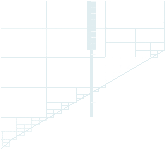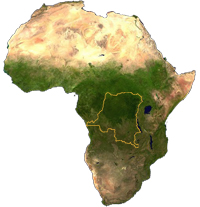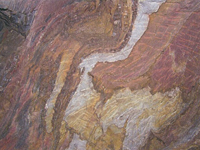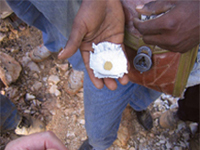 |

|




African GeologyThe continent of Africa is made up of a vast stable crystalline basement of very old rocks, mainly of Precambrian age. Superimposed on this basement are later, largely flat-lying cover successions; along the east, north, and west coasts there are sediments of Mesozoic and Tertiary age, deposited in marginal marine basins. The Precambrian basement can be divided into three large masses or cratons; these are the Kalahari, Congo, and West African cratons. They are separated from each other by a number of mobile belts active in late Precambrian and early Palaeozoic times. Congo Craton GeologyThe Congo craton occupies a large part of central southern Africa; its oldest rocks occur in the Tanzania province, an area of granitic basement and greenstone belts similar in structure to the Rhodesian province. Two younger belts of metamorphic rocks, the Ubendian and Toro belts, represent mobile belts active about 1,800 million years ago. Another distinctive but younger mobile belt is the Karagwe-Ankole belt, which runs northeast�southwest for at least 1,500 km/932 mi from Uganda to Zambia. It was active 1,400�1,000 million years ago and suffered several periods of deformation. The Congo Basin, made up largely of Mesozoic and Quaternary sediments, occupies large areas in the west and centre of the DRC. Precambrian metamorphosed sediments and Proterozoic platform sediments occur in the eastern part of the country. Dolomites and Neoproterozoic sediments of the Katanga Supergroup occur in the Shaba Province in the southeast of the country. Ancient shields (cratons) are regions where young (Cenozoic) channels cut through Paleozoic palaeochannels and rework their deposits; as a result, Paleozoic alluvium appears to be an intermediate host for recent placers (for example, the Kilo-Moto region in the Republic of Congo). Kilo-Moto is well known for its primary and placer gold deposits. Kilo-Moto GeologyGeologically, Kilo-Moto region is located within the Archaean block of the African platform - so called Epy-Archaean Congo craton, over the most part of which the Lower Archaean rocks of the Western Nile Formation and granite-gneiss domes separated by the Archaean greenstones rocks of the Kibali Group are distributed. To the south, fragments of the Late-Gondvana sedimentary cover, which is represented by the Upper Carboniferous-Permian continental glacial sediments of the Lukuga Formation (analogue of the Karroo Formation tillites). The distinct morphostructural setting of the Paleozoic palaeo-drainage filled by the Lukuga Formation sediments (glacio-fluvial arkoses and conglomerates and varved clays modified into schists) on the southern flank of the mega-arch, Pre-Ituri palaeo-valley in particular, shows they are inherited from pre-glacial depressions which in turn are controlled by the granite-gneiss dome structure. It revealed also a close morphostructural relationship of recent gold-bearing valleys of the Upper Ituri basin with the Pre-Ituri valley. |